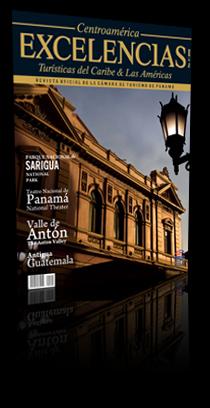A Panamanian Gem The National Theater
It was back in 1904 and the New Republic of Panama was living moments of splendor and growth. It was then when local authorities commissioned Italian architect Genaro Ruggiere to design the National Theater. In May of that same year, President Manuel Amador Guerrero had signed into law a regulation passed by the National Assembly of Constituent Members that gave the green light to build the National Theater and a governmental palace in an effort to make the fledgling country’s cultural life boom.
At that time, Panama was home to major theatrical events staged by French companies, a situation that prompted the nation’s economic, social and cultural bloom. Outstanding artists were making stopovers in the city during their tours, thus giving impresarios the chance to mount big-ticket shows that, based on the country’s geographical location, were too hard to be called off.
First Artistic Presentation The grand opening of the National Theater came in no time. Beginning October 4, the local newspapers started putting out a string of blurbs trumpeting the arrival of the Lombardi Opera Company from Guatemala, hired by Don Narciso Garay to stage a series of presentations in Panama.
A few weeks later, the Colon seaport welcomed the Parismina steamer with a company of 25 star artists, 8 supporting actors, 8 ballet dancers, a 30-member choir and an orchestra of a dozen musicians, all of them under the leadership of conductor Don Mario Lombarda. The moving of the company’s luggage required 20 railroad cars and major unloading efforts. Finally, everything and everybody landed safe and sound in Panama City and the first presentation was scheduled for October 22 for the premiere of the Aida opera, one of maestro Giuseppe Verdi’s loveliest compositions ever.
To top it all off, the swearingin ceremony of President Jose Domingo de Obaldia happened together with the grand opening of the National Theater, on October 1, 1908. Therefore, President Obaldia, members of his cabinet and guests of honor attended the premiere night and watched the play from the presidential box. That first staging kicked off exactly at 8:40pm. Prof. Narciso Garay conducted the orchestra through a patriotic hymn he had composed specially for such a memorable occasion.
The following-day chronicles and commentaries on the premiere underscored the masterfulness of the artists, chiefly the Benedetto lady whose beautiful voice and histrionic skills captivated the audience from the very first note.
The fanciness of the costumes and the extraordinary orchestral support were key elements that played a role in the success of the gala night. Over 1,000 people were said to have crowded the theater’s two-tier boxes, front stalls, the auditorium aisles and the rear seats. The entire place was simply bursting at the seams.
The beautiful decoration of the theater and the dazzling lights provided the perfect backdrop for ladies in the audience to boast their finest fashion clothes and fancy jewels. All this much marked the entry of this theater in history with the support of State-run cultural plans that helped put the barely fouryear- old new republic on the map of the Americas with an eye-popping theater fit for any of the world’s best cities.
Charming Spaces As you walk into the National Theater, you feel the magic ambience that shrouds the entrance hall and the thresholds for the play intervals. But many of the interiors also strike the attention of the public. The spacious foyer on the top floor and the decoration provided by the symbolic art of maestros Roberto Lewis and Enrico Corrado are good cases in point.
Muralist Lewis designed the ceiling rose, a highly artistic artwork depicting the birth of the new republic whose layout represents allegorically the majestic character of the homeland standing next to Apollo, the muses and other classic figures. These paintings were made by the artist somewhere between 1897 and 1908 when Lewis was serving as Panamanian consul to France. The pieces of work were ferried aboard a steamer to the Panamanian capital.
Known as the former Nuns Headquarters, the National Theater can seat 853 people distributed in the auditorium aisles, the front stalls, the two-tier balconies and the rear seats. This artistic space sports the architecture of an Italian-style operetta theater, let alone a roomy foyer that welcomes visitors and leads them to the rest of the areas.
On the bottom floor, the stage is deep enough to give actors and actresses plenty of wiggle room, while the backstage has been resized to accommodate the needs of modern orchestras. The front stalls and the auditorium aisles are excellently laid out and outfitted with comfortable armchairs that guarantee a peerless view of the stage.
After 100 years of existence, the finest companies from the Americas and Europe have made superb presentations of such classic pieces as Aida, Carmen, Lammemour’s Lucia, The Magic Flute, Tosca and Faust. Boldface names of the performing arts from around the world, like Margot Fontaine and Alicia Alonso, and talented musicians like Nelly, James Ingram, Alfredo de Saint Malo, Roque Cordero, Herbert de Castro, Eduardo Charpentier and Carmen Cedeño have acted in this institution that so much glory and pride give to the whole Panamanian people.













